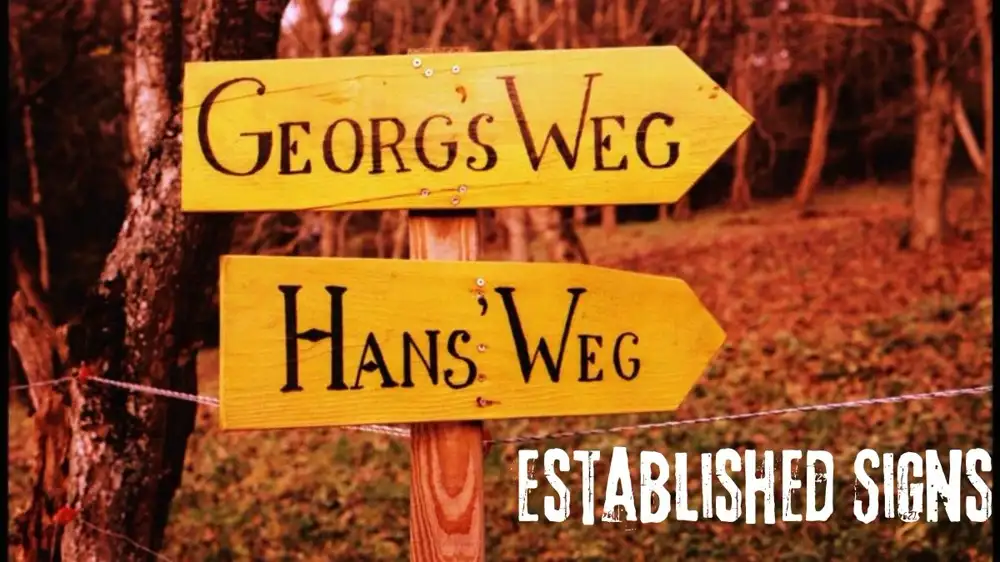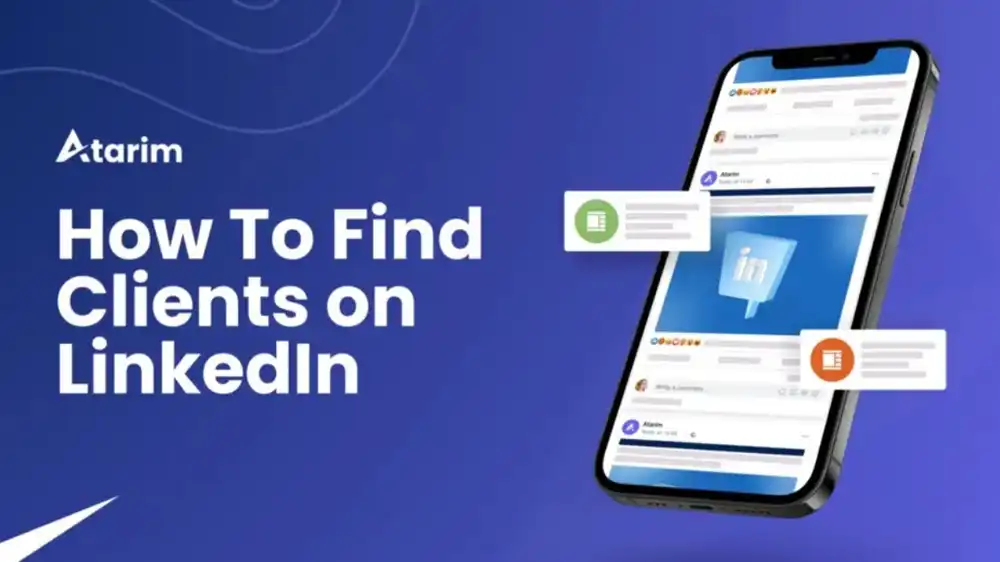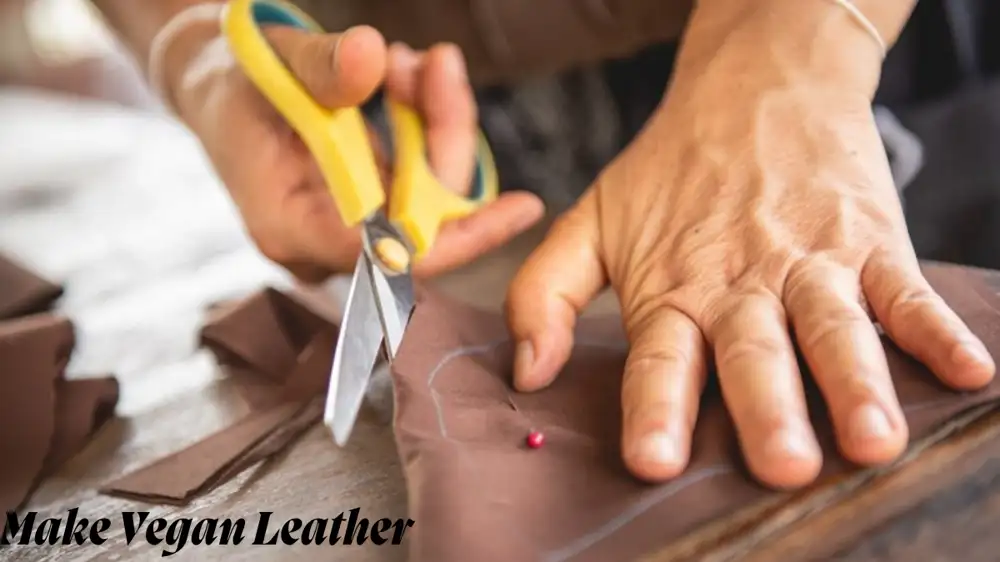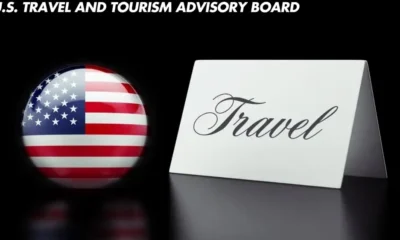Blog
Established Signs: Understanding Their Importance and Meaning

The term “established signs” refers to certain indicators, messages, or symbols that have been officially acknowledged and universally accepted by a variety of sectors. Usually, these indicators efficiently and rapidly communicate important data. The various kinds of established indicators, their applications, and the reasons they are essential in daily life will all be covered in this article.
What Are Established Signs?
A symbol, signal, or indicator that has been established and accepted by most is known as an established sign. These signs are used by people to convey instructions or special messages, sometimes without the use of words. Road signs, safety indicators, and even nonverbal clues in social settings are just a few examples of the various contexts in which they might be observed.
Examples of Established Signs

Examples of Established Signs
- Traffic Signs: Road signs like stop signs, speed limits, and yield signs are some of the most common examples of established signs. These symbols are universally recognized across different countries and help keep roads safe for everyone.
- Workplace safety signs, such as “fire exit” or “hazardous materials” warnings, alert people to potential dangers. These signs follow a standardized system, ensuring that the message is clear to all workers, regardless of their language or background.
- Public Information Signs: In public spaces, established signs like restroom symbols, elevator buttons, and exit signs guide people efficiently. These simple, clear symbols ensure that people can navigate large buildings without confusion.
- Medical Signs: In the healthcare industry, established signs like the red cross or the universal “no smoking” symbol play a critical role in ensuring health and safety. These signs are quickly recognized by medical professionals and patients alike.
Why Are Established Signs Important?
Established signs are vital because they help streamline communication. They enable people to quickly understand what they need to do, where they need to go, or what actions they should avoid, often in situations where a detailed explanation isn’t possible.
1. Improved Safety
The most significant benefit of established signs is safety. Traffic signs, workplace safety signs, and emergency exit signs all serve to prevent accidents. By using universally recognized symbols, these signs help people make quick decisions in critical situations.
2. Enhanced Clarity
Established signs reduce confusion. When everyone knows what a symbol means, it makes information easier to process, regardless of language or cultural differences. For example, a red circle with a diagonal line across it universally means “no entry.”
3. Time-Efficiency
In fast-paced environments, established signs provide instant information. In airports, train stations, or hospitals, time is often of the essence. People can read a symbol and immediately understand the necessary action, without the need for verbal instructions.
Types of Established Signs
Established signs come in many different forms, each designed to serve a specific purpose. Let’s dive deeper into some of the key categories of these signs.
1. Regulatory Signs
Regulatory signs are rules or laws that people must follow. These include traffic signs like:
- Stop Signs: A red octagon-shaped sign with the word “STOP” is universally understood. It tells drivers to come to a full stop and check for traffic before proceeding.
- Speed Limit Signs: These signs, usually rectangular and white with black numbers, indicate the maximum speed a vehicle can legally travel on a road.
- Yield Signs: A triangular red and white sign means that drivers should yield or give way to oncoming traffic.
These signs are essential for maintaining order and safety on the roads.
2. Warning Signs
Warning signs alert people to potential dangers or hazards. You can find these signs in various environments, including construction sites, roads, and workplaces. Additionally, people commonly place them in public spaces, such as parks and shopping malls, highlighting their widespread presence. As a result, they play an essential role in guiding and informing people in numerous settings. Some common examples include:
- Caution Signs: Yellow triangular signs, often with a black border, indicate a potential hazard like wet floors or slippery conditions.
- Sharp Turn Signs: In roadways, these signs alert drivers about upcoming curves, requiring them to reduce speed.
- High Voltage Signs: Industrial settings commonly display these signs to alert workers to areas with electrical hazards.
These signs are designed to prevent accidents and injuries by providing early warnings.
3. Informational Signs
Informational signs provide essential details without enforcing rules or warnings. For example:
- Restroom Signs: Simple figures of a man and a woman on doors indicate the location of restrooms.
- Exit Signs: Green signs with arrows or simple text help people quickly locate exits in case of emergencies.
- Directional Signs: These signs guide people towards specific locations, such as gates at an airport or an exit in a building.
These signs help people navigate spaces efficiently, without needing further explanation.
4. Hazardous Material Signs
In industrial, medical, and environmental contexts, hazardous material signs are extremely important for identifying substances that can pose a risk. Examples include:
- Biohazard Symbols: Often seen in labs or hospitals, this symbol warns about the presence of biological materials that could cause harm.
- Chemical Hazard Signs: These are used in workplaces to indicate areas where toxic or corrosive chemicals are used.
By using these established signs, people can take appropriate precautions to avoid exposure to dangerous substances.
5. Emergency Signs
Emergency signs are crucial for directing people in times of crisis. They include:
- Fire Exit Signs: Green and white signs indicating the nearest escape route during a fire or other emergency.
- First Aid Signs: Red and white symbols signaling the location of a first aid kit or medical help.
- Emergency Contact Numbers: Signs listing important emergency contacts, like fire departments or poison control centers, provide vital information during a crisis.
These signs are meant to reduce panic and help people react quickly in emergencies.
How Established Signs Improve Communication
In many situations, language barriers or lack of literacy can prevent people from understanding verbal or written instructions. Established signs overcome these challenges by using simple, universally recognizable symbols that everyone can understand, regardless of their background.
Visual Language
Established signs function as a form of visual language. Just like words and sentences, symbols have specific meanings that are widely understood. This visual language is especially effective in diverse settings, where, for instance, people may speak different languages or have limited literacy skills. Moreover, it serves as a universal means of communication, bridging language barriers and ensuring clarity. Consequently, in such environments, it proves to be an invaluable tool for conveying important messages.
Universality of Symbols
International organizations have standardized many symbols used in established signs. For example, they have made the red cross symbol globally recognized as a medical aid symbol, while they have designated a green circle with a white figure to indicate an emergency exit. Because of this universality, people across different cultures and languages can understand the same information through these visual cues.
Reducing Ambiguity
Clear, straightforward signs help eliminate ambiguity. For example, a “no smoking” sign, which typically features a cigarette and a red slash, is universally understood to mean that smoking is prohibited. In fact, this symbol has become so recognizable that it transcends language barriers. As a result, people everywhere can quickly grasp its meaning, ensuring clear communication across diverse cultures. There’s no need for lengthy explanations or translations. The simplicity and directness of the message ensure that people understand it immediately.
The Evolution of Established Signs
Over the years, the use of signs and symbols has evolved significantly. Initially, they served basic functions; however, as time passed, they began to take on more complex roles. Furthermore, with advancements in technology, their design and application have become even more sophisticated. Consequently, signs and symbols now play a much broader and more essential role in communication. Early signs were often rudimentary, relying on simple pictures to convey basic messages. As societies became more complex, the need for standardized and widely recognized signs grew.
Development of Traffic Signs
In the early days of automobiles, road signs were inconsistent and often unclear. Over time, as the number of vehicles on the road increased, the need for standardized traffic signs became evident. Organizations like the International Road Assessment Programme (iRAP) and the United Nations Economic Commission for Europe (UNECE) began developing global road sign standards to ensure road safety across borders.
Rise of Workplace Safety Symbols
In the industrial age, workplace accidents became more common, leading to the creation of safety regulations and standards. Organizations like OSHA (Occupational Safety and Health Administration) in the United States, and their counterparts in other countries, introduced a system of safety signs that workers could easily recognize. These signs helped reduce workplace injuries and improve compliance with safety standards.
International Standardization
In the modern world, international agreements and guidelines standardize many established signs. For example, the International Organization for Standardization (ISO) works to ensure that symbols for safety, direction, and hazard identification are consistent and universally understood.
Challenges and Future of Established Signs
While established signs have greatly improved communication, there are still challenges to their effectiveness. We need to address issues such as cultural differences, evolving technology, and the need for constant updates.
1. Cultural Interpretations
While many symbols are universal, certain signs may have different meanings depending on the country or culture. For example, one culture may consider a hand gesture polite, while another culture may find it offensive. It’s important to ensure that symbols remain culturally neutral to avoid confusion.
2. Technological Changes
With the rise of digital technologies, the way we interact with signs is changing. For instance, digital road signs, augmented reality apps, and interactive signage in public spaces are becoming more common. These technological advances require new forms of communication that still need to maintain clarity and simplicity.
3. Updating Standards
As new hazards emerge and safety protocols evolve, we need to regularly update established signs. For instance, the emergence of new environmental hazards or global health concerns may lead to the introduction of new symbols and signs.
Conclusion
Established signs, which offer succinct and clear communication in a variety of situations, are an essential component of modern life. These signs, ranging from traffic signals to workplace safety indicators, ensure that people understand crucial instructions promptly. Established signs will continue to develop by adhering to global standards and adjusting to new technology, enhancing efficiency, safety, and clarity in our daily lives.
The most popular question asked people
What Are Wooden Signs?
Craftsmen craft wooden signs from wood, using them for decorative or functional purposes. They can feature text, symbols, or images, and people commonly use them for things like house numbers, business names, or family names.
How to Personalize a Family Name?
To personalize a wooden sign with your family name, you can either paint or engrave your last name onto the wood, often accompanied by decorative elements like borders, symbols, or meaningful phrases to make it unique and special.
What Material Is Used for Wood Signs?
Wooden signs are typically made from natural wood types like pine, oak, or cedar. These materials are durable, easy to carve or paint on, and have a rustic, timeless appeal.
What Are Signs in Design?
In design, signs refer to visual cues or symbols used to convey messages or information. They can be graphic, like logos or icons, and are essential for guiding actions or providing clarity, much like the established signs discussed above.

Blog
Paper Screening Based Test Ph-V for DM (B-15) Domicile holders of Nowshera, Charsadda & Malakand District in the E&SED Khyber Pakhtunkhwa [TEST DATE: 1st June’ 2025]
Candidate’s Answer Sheet Section
PST (BPS-12), CT (BPS-15), PET (BPS-15), DM (BPS-15), TT (BS-15)
Blog
How to gain High-Value clients on LinkedIn?

Key Points
- Research suggests optimizing your LinkedIn profile and engaging with your network can help gain a clients on LinkedIn.
- It seems likely that building relationships through personalized outreach and providing value are effective strategies.
- The evidence leans toward consistency and patience being crucial for success on LinkedIn.
Optimize Your Profile
Start by ensuring your LinkedIn profile is professional and appealing. Use a clear headshot, craft a headline that highlights what you offer, and write a summary showcasing your expertise. This makes you more visible to potential clients.
Build and Engage Your Network
Connect with industry professionals and potential clients, personalizing your requests to increase acceptance. Engage by liking, commenting, and sharing their posts, and join relevant LinkedIn groups to expand your reach.
Reach Out and Provide Value
Send personalized messages to potential clients, focusing on building relationships rather than selling immediately. Share useful content, offer free resources, or host webinars to demonstrate your expertise and build trust.
Move Conversations Offline and Be Consistent
Once you’ve built rapport, suggest a call or meeting to discuss how you can help. Stay consistent with daily engagement, as gaining clients on LinkedIn takes time and persistence.
Detailed Strategies for Gaining Clients on LinkedIn
This section provides a comprehensive guide based on extensive research into LinkedIn client acquisition strategies, drawing from multiple authoritative sources. The following details expand on the key points, offering a step-by-step approach for users looking to leverage LinkedIn effectively.
Profile Optimization: The Foundation for Visibility
Your LinkedIn profile is your digital storefront, and optimizing it is critical for attracting clients. Use a professional headshot to make a strong first impression, as profiles with photos receive more views. Craft a compelling headline that clearly states your value proposition, such as “Freelance Graphic Designer Helping Brands Stand Out” rather than a generic title like “Designer.” The summary should highlight your expertise, past achievements, and what you offer, using relevant keywords to improve search visibility. For example, if you’re targeting marketing agencies, include terms like “digital marketing,” “brand strategy,” and “client growth.”
Research from Dripify: How to Get Clients From LinkedIn emphasizes using SEO techniques, such as incorporating keywords in your headline and summary, to ensure your profile appears in searches. Additional resources, such as Dripify: Improve LinkedIn Profile and Dripify: LinkedIn SEO, provide detailed tips on enhancing visibility.
Identifying and Targeting Ideal Clients
To gain clients, you must first define your ideal customer avatar. This involves identifying their industry, job titles, and pain points. For instance, if you’re a web developer, target marketing managers in e-commerce firms. Use LinkedIn’s advanced search to filter by keywords, location, and industry, and consider Boolean operators (e.g., “web development” AND “e-commerce”) for refined results, as suggested by Dripify: Boolean Search on LinkedIn.
For advanced targeting, LinkedIn Sales Navigator offers features like lead recommendations and saved leads, though it’s a paid tool. The LinkedIn Sales Blog: 7 Steps to Attract More Clients With LinkedIn recommends using Sales Navigator for criteria like title and industry, with insights from LinkedIn: How to Use Sales Navigator.
Building and Engaging Your Network
Networking is at the heart of LinkedIn client acquisition. Start by connecting with colleagues, former clients, and industry leaders, personalizing each request to increase acceptance rates. For example, mention a shared interest or connection in your message. Engage with your network by liking, commenting, and sharing their posts, which helps build rapport.
Participating in LinkedIn groups is another effective strategy. Join groups relevant to your industry, such as “Digital Marketing Professionals,” and contribute by answering questions or sharing insights. Dripify: LinkedIn Groups highlights this as a way to connect with potential clients. Additionally, publishing thought leadership content, such as LinkedIn Articles addressing audience pain points, can position you as an expert. An example is the article “5 Game-Changing Digital Marketing Strategies for Small Businesses,” as noted in Dripify: LinkedIn Articles.
Personalized Outreach and Relationship Building
Once connected, avoid the mistake of immediate pitching, which can alienate potential clients. Instead, send personalized messages that focus on building relationships. For instance, ask about their current challenges or share a relevant article. The LinkedIn Sales Blog advises speaking like a human, finding commonalities, and following advice from experts like Will Allred on communication, available at LinkedIn: Don’t Pitch and Connect.
The DigitalMarketer: Build a Steady Stream of Clients suggests a non-salesy welcome message, including a question like “Tell me something interesting about your work,” to drive engagement. This approach, informed by Ted Prodromou’s book Ultimate Guide to LinkedIn for Business, emphasizes helping without expecting immediate returns, pretending you’re at a coffee meeting.
Providing Value to Build Trust
Providing value is crucial for converting connections into clients. Share resources, guides, or e-books that address your target audience’s pain points. For example, host a webinar on “Effective Social Media Strategies for Small Businesses” to showcase your expertise. Dripify: Create Value for Customers offers ideas like sharing case studies or hosting workshops.
Engaging in conversations is also key—be proactive by offering insights on posts or articles, and ask questions to spark dialogue. This builds trust and positions you as a helpful resource, as noted in Dripify: How to Get Clients From LinkedIn.
Moving Conversations Offline and Closing Deals
After building rapport, transition relationships offline by suggesting a phone call or virtual meeting. The DigitalMarketer process includes inviting responders to a short call, asking, “Would you like my help?” at the end, and closing deals via these interactions. The LinkedIn Sales Blog emphasizes demonstrating credibility before moving offline, ensuring you’ve established value.
Leveraging Recommendations and Referrals
Recommendations enhance your profile’s credibility, making it easier to attract clients. Ask satisfied clients or colleagues for recommendations, highlighting specific projects. For example, request, “Could you recommend me based on our recent website redesign project?” Follow up with gratitude, as outlined in Dripify: LinkedIn Recommendations, which lists five steps: identify connections, personalize, highlight relationships, be specific, and express gratitude.
Additionally, leverage your existing network for referrals. Reach out to former colleagues or friends, personalizing messages to seek introductions, as suggested in Dripify: How to Get Clients From LinkedIn.
Consistency and Patience: The Long-Term Approach
Gaining clients on LinkedIn requires consistency. Dedicate 30 minutes daily to engage, as per the DigitalMarketer 8-step process, which includes connecting, messaging, and following up. The LinkedIn Sales Blog stresses building your reputation over time, with success stories like Darren McKee, who gained 1,000 followers per week by posting consistently for over 1,000 days, detailed at LinkedIn: Posted on LinkedIn 950 Days Straight.
Patience is key, as results take time. The Dripify article notes LinkedIn’s 800 million members worldwide offer immense potential, but building relationships is a gradual process.
Additional Strategies for Advanced Users
For those looking to scale, consider using LinkedIn automation tools like Dripify for connection requests and follow-ups, ensuring compliance with LinkedIn’s policies, as detailed at Dripify: LinkedIn Automation Tools. Optimize your Social Selling Index (SSI) for better performance, with tips at Dripify: LinkedIn SSI Score. Drive traffic to your website via your profile link, share content, and use LinkedIn ads for broader reach, as noted in Dripify: Increase Website Traffic Using LinkedIn.
Collaborate with influencers for guest posts or joint webinars to expand your audience, as suggested at Dripify: Digital Marketing Experts. For hidden profiles, use LinkedIn X-Ray Search, detailed at Dripify: LinkedIn X-Ray Search.
Tables: Key Strategies and Tools
Below is a table summarizing the core strategies, with corresponding tools and resources:
| Strategy | Description | Tools/Resources |
|---|---|---|
| Profile Optimization | Enhance visibility with professional photo, headline, summary, keywords. | Dripify: Improve LinkedIn Profile, Dripify: LinkedIn SEO |
| Network Building | Connect with professionals, personalize requests, engage via likes/comments. | Dripify: Self-Entrepreneur LinkedIn |
| Group Engagement | Join industry groups, participate in discussions, share expertise. | Dripify: LinkedIn Groups |
| Content Publishing | Share articles addressing pain points, engage in comments. | Dripify: LinkedIn Articles |
| Advanced Search | Use keywords, filters, Boolean operators for targeted searches. | Dripify: Boolean Search on LinkedIn |
| Sales Navigator | Advanced filters, lead recommendations, InMail for direct messaging. | Dripify: How to Use LinkedIn Sales Navigator |
| Recommendations | Request from clients, highlight projects, express gratitude. | Dripify: LinkedIn Recommendations |
| Value Provision | Share resources, host webinars, address audience challenges. | Dripify: Create Value for Customers |
Another table for daily engagement, based on the 8-step process:
| Step | Daily Action | Time Estimate |
|---|---|---|
| 1 | Identify ideal customer, use worksheet for targeting. | 5 minutes |
| 2 | Define problems you solve, focus on results. | 5 minutes |
| 3 | Optimize profile, ensure headline and summary attract clients. | 5 minutes |
| 4 | Connect, send non-salesy messages, include questions. | 5 minutes |
| 5 | Keep in touch, share relevant content every few months. | 5 minutes |
| 6 | Invite to calls, ask if they need help, close deals. | 5 minutes |
| 7 | Build authority, write recommendations, prompt reciprocation. | 5 minutes |
| 8 | Repeat steps 4-7 daily, maintain consistency. | Ongoing |
Success Stories and Statistics
Success stories underscore the potential of these strategies. Darren McKee’s consistent posting for over 1,000 days resulted in 1,000 followers per week, as detailed at LinkedIn: Posted on LinkedIn 950 Days Straight. The DigitalMarketer process helped create a six-figure business, with Ted Prodromou’s book Ultimate Guide to LinkedIn for Business providing further insights. LinkedIn’s 800 million members, as noted in Dripify, offer a vast pool for client acquisition.
Conclusion
Gaining clients on LinkedIn is a multifaceted process requiring profile optimization, targeted networking, engagement, and consistent effort. By following these strategies, users can build relationships, provide value, and ultimately secure clients, with patience being essential for long-term success.
Blog
How to Make Vegan Leather from Recycled Materials: A Step-by-Step Guide

In recent years, vegan leather has become a cruelty-free and eco-friendly alternative to traditional animal leather. But did you know you can take sustainability a step further by creating vegan leather from recycled materials? This innovative approach reduces waste, lowers carbon footprints, and empowers you to craft stylish, durable goods at home.
This guide explores simple, creative methods to make vegan leather using everyday recycled items like plastic bottles, cork, pineapple leaves, and more. Let’s dive in!
Why Choose Vegan Leather from Recycled Materials?
Traditional leather production harms the environment through deforestation, water pollution, and methane emissions from livestock. Vegan leather offers a compassionate alternative, but many store-bought options rely on synthetic plastics like PVC, which aren’t biodegradable.
By using recycled materials, you:
- Reduce landfill waste (e.g., repurposing plastic bottles or fruit scraps).
- Save resources (no need for virgin plastics or animal farming).
- Create customizable, unique textures (each material has its look and feel!).
Whether you’re a DIY enthusiast or a sustainability advocate, making vegan leather at home is a fun, impactful project.
Materials You Can Use to Make Vegan Leather
Almost any flexible, durable recycled material can become vegan leather! Here are the most popular options:
- Recycled Plastic (rPET): Plastic bottles, packaging, or old polyester fabrics.
- Cork: Wine corks, corkboard scraps, or industrial cork waste.
- Plant-Based Fibers: Pineapple leaves (Piñatex), apple peels, or mushroom mycelium.
- Upcycled Fabrics: Denim, canvas, or rubber from old tires.
Each material requires slightly different techniques. Below, we’ll break down five easy methods.
Method 1: Recycled Plastic Bottle Leather (rPET)
Materials Needed:
- Clean plastic bottles (PET)
- Scissors or craft knife
- Non-toxic adhesive (e.g., cornstarch glue)
- Baking parchment
- Iron or heat press
Steps:
- Prepare the Plastic:
Cut bottles into flat sheets. Remove labels and caps, then slice vertically. Flatten the pieces and trim the edges. - Create Layers:
Overlap plastic pieces on baking parchment. Apply adhesive between layers to bond them. - Press and Heat:
Cover with another parchment sheet. Iron at medium heat (150°C/300°F) for 10–15 seconds, applying even pressure. Repeat until layers fuse into a flexible sheet. - Finish:
Let cool. Sand edges for smoothness, or dye with natural pigments for color.
Best For: Bags, wallets, and accessories. rPET leather is water-resistant and sturdy!
Method 2: Cork Leather from Wine Corks
Materials Needed:
- Wine corks (10–15 for a small sheet)
- Food processor or grater
- Non-toxic binder (flour paste or eco-friendly glue)
- Rolling pin
- Wax paper
Steps:
- Shred the Corks:
Grate corks into fine granules using a food processor. Avoid plastic-backed corks. - Mix with Binder:
Combine cork granules with binder until it forms a dough-like consistency. - Roll and Dry:
Place the mixture between wax paper sheets. Roll flat (3–5mm thick). Air-dry for 24–48 hours. - Seal (Optional):
Brush with beeswax or linseed oil for a polished, water-resistant finish.
Best For: Notebook covers, coasters, or jewelry. Cork is lightweight and naturally textured.
Method 3: Pineapple Leaf Leather (Piñatex)
Materials Needed:
- Pineapple leaves (from 5–6 pineapples)
- Blender
- Natural dye (optional)
- Cornstarch or agar-agar (as a binder)
- Mesh screen or cloth
Steps:
- Extract Fibers:
Boil leaves for 30 minutes to soften. Scrape off pulp with a knife, revealing long fibers. Rinse and dry. - Blend and Bind:
Mix fibers with 1 cup water and 2 tbsp binder in a blender. Pour onto a mesh screen to form a thin layer. - Dry and Press:
Sun-dry for 2–3 days, pressing occasionally with a heavy book to flatten.
Best For: Shoes, belts, or upholstery. Piñatex has a rustic, fibrous appearance.
Method 4: Mushroom Leather (Mycelium)
Materials Needed:
- Mushroom mycelium starter kit (available online)
- Organic substrate (sawdust or straw)
- Baking tray
- Dehydrator or oven
Steps:
- Grow Mycelium:
Spread the substrate in a tray. Inoculate with mycelium spores. Store in a dark, humid place for 2–3 weeks. - Harvest and Press:
Once fully grown, peel the mycelium mat from the substrate. Press between boards to flatten. - Tan and Dry:
Soak in a natural tannin (like oak gall solution) for 1 hour. Dehydrate at 40°C (104°F) until leathery.
Best For: High-fashion items. Mycelium leather is biodegradable and mimics animal leather’s softness.
Method 5: Apple Peel Leather
Materials Needed:
- Apple peels (from 10–12 apples)
- Blender
- Glycerin or vegetable glycerin
- Baking sheet
Steps:
- Blend Peels:
Puree peels with 1 tbsp glycerin until smooth. - Spread and Dry:
Pour the mixture onto a baking sheet lined with parchment. Dry in sunlight or an oven at 50°C (120°F) for 8–12 hours. - Finish:
Peel off the sheet. Condition with coconut oil for flexibility.
Best For: Small accessories or decorative patches. Apple leather has a fruity scent and matte finish.
Customizing Your Vegan Leather
Make your creations stand out with these tips:
- Dyeing: Use turmeric (yellow), beet juice (pink), or spirulina (green).
- Embossing: Press leaves or lace into the material before drying.
- Stitching: Reinforce edges with upcycled thread or hemp cord.
Caring for Vegan Leather
- Cleaning: Wipe with a damp cloth. Avoid harsh chemicals.
- Storage: Keep in a cool, dry place to prevent mold.
- Repair: Patch tears with adhesive or a matching material piece.
Environmental Impact and Challenges
Pros:
- Reduces plastic and organic waste.
- Uses less water and energy than animal leather.
Cons:
- Some methods require practice to perfect.
- Plant-based leathers may be less durable than synthetics.
5 FAQs about How to Make Vegan Leather from Recycled Materials
1. Can I make vegan leather at home without specialized equipment?
Answer: Absolutely! Many methods for making vegan leather from recycled materials require only basic household items like scissors, a blender, an iron, or a baking sheet. For example, creating cork leather or apple peel leather can be done with minimal tools. While some techniques, like growing mushroom leather, may need a starter kit, most DIY vegan leather projects are beginner-friendly and don’t require expensive equipment.
2. How durable is vegan leather made from recycled materials compared to traditional leather?
Answer: The durability of vegan leather depends on the materials and methods used. For instance, recycled plastic bottle leather (rPET) is highly durable and water-resistant, making it ideal for bags and accessories. On the other hand, plant-based options like pineapple or apple leather may be softer and better suited for lightweight items. While vegan leather may not always match the longevity of traditional leather, proper care (like sealing and conditioning) can significantly extend its lifespan.
3. Is vegan leather from recycled materials biodegradable?
Answer: It depends on the materials used. Plant-based vegan leathers, such as those made from pineapple leaves, cork, or mushroom mycelium, are biodegradable and compostable. However, vegan leather made from recycled plastics (like rPET) is not biodegradable, though it still helps reduce waste by repurposing existing materials. If biodegradability is a priority, opt for natural, plant-based options.
4. Can I scale up DIY vegan leather production for small businesses?
Answer: Yes, you can! Many of the methods described in the article, such as using pineapple leaves or recycled plastics, can be scaled up with some adjustments. For example, investing in a heat press for rPET leather or a dehydrator for mushroom leather can streamline production. Additionally, sourcing bulk recycled materials and experimenting with efficient techniques can help you create consistent, high-quality vegan leather for a small business.
5. What are the best ways to dye vegan leather naturally?
Answer: Natural dyes are a great eco-friendly option for coloring vegan leather. You can use ingredients like turmeric (for yellow), beet juice (for pink), spirulina (for green), or coffee grounds (for brown). Simply mix the dye with water, apply it to the material using a brush or sponge, and let it dry. For a more vibrant color, repeat the process or add a natural fixative like vinegar. This approach is safe, sustainable, and adds a unique touch to your creations.
Final Thoughts
Creating vegan leather from recycled materials is a rewarding way to support sustainable fashion. Whether you’re crafting a wallet from plastic bottles or a chic bag from pineapple leaves, each project makes a difference. Ready to start? Gather your materials, experiment with textures, and share your creations to inspire others!
By embracing DIY vegan leather, you’re not just making accessories—you’re shaping a greener future.
Most People ask questions on Google about How to Make Vegan Leather from Recycled Materials
What is the process of making vegan leather?
Vegan leather is made without animal hides and instead uses plant-based or synthetic materials. The process varies depending on the type of material used but generally follows these steps:
- Material Sourcing – Vegan leather can be made from plants like mushrooms, pineapples, apples, cacti, or synthetic materials like polyurethane (PU).
- Processing & Treatment – Plant fibers are extracted and mixed with binders or resins to create a durable, leather-like texture. In synthetic versions, plastic is melted and spread into thin layers.
- Shaping & Drying – The material is shaped into sheets and left to dry. This stage determines its thickness and flexibility.
- Texturizing & Coloring – To mimic real leather, the material is embossed with a grain pattern and dyed using eco-friendly or synthetic dyes.
- Finishing Touches – A protective coating is applied for durability, water resistance, and longevity.
How do you make vegan plant-based leather?
Plant-based vegan leather is made using natural materials and fewer chemicals compared to synthetic alternatives. The process depends on the plant source but generally includes:
- Collection & Processing – Fruit waste (pineapple leaves, apple peels, etc.), cactus, or mushrooms are harvested and dried.
- Fiber Extraction & Blending – The plant fibers are broken down and mixed with natural binders like starch or plant-based resins to form a leather-like sheet.
- Shaping & Texturing – The material is rolled out, textured, and sometimes reinforced with fabric backings for extra strength.
- Tanning & Dyeing – The sheets are treated with natural tannins (from tree bark, for example) and dyed with plant-based or non-toxic dyes.
- Finishing – A protective, biodegradable coating is applied for durability and water resistance.
Popular plant-based vegan leathers include Piñatex (pineapple leather), Mylo (mushroom leather), and Desserto (cactus leather).
How do you recycle vegan leather?
Recycling vegan leather depends on its materials:
- Plant-based vegan leather is biodegradable, meaning it will naturally break down over time. Some types can be composted in industrial facilities.
- Synthetic vegan leather (PU, PVC) is harder to recycle due to plastic content. Some brands have take-back programs for recycling.
- Upcycling is another option—old vegan leather items can be repurposed into new accessories like wallets or keychains.
To be more eco-friendly, look for plant-based or recycled-material vegan leathers rather than plastic-based options.
What materials are used to make vegan leather?
Vegan leather is made from a variety of natural and synthetic materials, including:
🌱 Plant-Based Materials:
- Pineapple leaves (Piñatex)
- Cactus (Desserto)
- Mushrooms (Mylo)
- Apple peels
- Cork
- Banana fibers
🛠 Synthetic Materials:
- Polyurethane (PU)
- Recycled plastics (from bottles or industrial waste)
- Polyvinyl chloride (PVC) – less eco-friendly
The best vegan leathers are plant-based or made from recycled materials, as they are more sustainable than plastic-based versions.
What are the ingredients in vegan leather?
The ingredients vary depending on the type of vegan leather:
- Plant-Based Leather – Natural plant fibers, bio-based binders (like corn starch or natural resins), plant-based dyes, and protective coatings made from waxes or oils.
- Synthetic Vegan Leather – Polyurethane (PU) or PVC, plasticizers, synthetic dyes, and chemical coatings for texture and durability.
For an eco-friendly choice, look for low-plastic, biodegradable vegan leathers made from plants or recycled materials.
-

 Travel6 months ago
Travel6 months agoTop 5 Ways Stephen Revetria Elevates the U.S. Travel and Tourism Advisory Board
-

 Crypto7 months ago
Crypto7 months agoUnlock 7 Powerful Cryptocurrency Insights: Delving into NewzNav.com’s Crypto Archives
-

 Technology7 months ago
Technology7 months agoHydrogen Water Machines: Revolutionizing Hydration and Wellness
-

 NEWS & Society7 months ago
NEWS & Society7 months agoChurch of the Holy Spirit News: Events & Impact
-

 Games7 months ago
Games7 months agoDownload Tekken 6 PC: A Comprehensive Resource